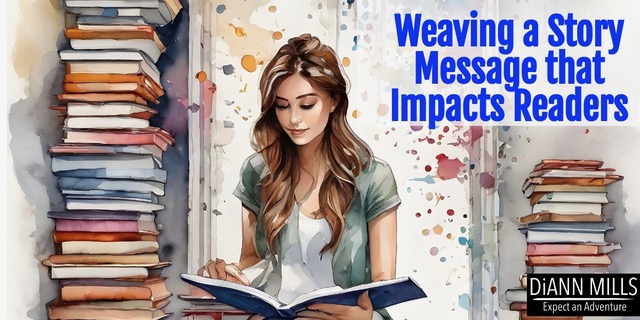
A writer who strives to entertain, inspire, and encourage moves the reader emotionally with an unforgettable message.

I believe a writer’s number one purpose in creating a story is to entertain readers.
A unique character who sets out to solve a problem or reach a goal thrills readers. Add an unpredictable plot with lots of twists and turns, and readers race to find the author’s next book.
My second purpose is to inspire readers. Readers vicariously experience a character’s struggle and, eventually, the character’s success in that struggle. This sends a subtle message for readers to find courage and move forward to accomplish what seems impossible in their lives.
My third purpose is to encourage the reader in whatever life has presented them. This means readers find confidence in themselves and seek change if necessary.
A writer who strives to entertain, inspire, and encourage moves the reader emotionally with an unforgettable message. The result is an incredible story that thrives on spirit. A message created for the reader is not a litany of the author’s personal, mental, or spiritual agendas. Instead, it’s a takeaway that I hope readers discover as they journey with my protagonist(s) through one challenge after another before ultimately achieving victory.
How does a writer weave a message into their story? I don’t believe achieving the spirit of a novel happens with a focus on a single literary technique: story idea, goal, theme, setting, dialogue, emotion, point of view, symbolism, or characterization. Instead, every character’s actions and thoughts construct the message, and it then subtly breathes life through every word and pumps power into the story.
My caution is not to state the message. Inserting “Did you get this? Or “The message of the story is . . .” tells instead of shows, and that insults the reader. Show the message through the POV character’s point of view and actions. The reader doesn’t spend time with our book to hear our opinion about a matter; they read our book to engage in an adventure. Allow the reader to grasp the message for themselves, and if they don’t discover it, that’s okay. A writer is responsible for their craft, not the reader’s response.
Example: A woman is abducted during a bank robbery by two masked people. She is collateral, the thieves’ insurance for a safe getaway. The woman fears she will be killed, but she refuses to show her terror or weakness in the face of adversity until circumstances (plot) find her successful in escaping death. How the woman internalizes, behaves, communicates, and ultimately links hands with freedom is the story’s message.
*She may pray.
*She may face fear.
*She may speak boldly.
*She may create a plan.
*She may say nothing at all.
*She may linger on potentially never seeing loved ones again.
Every story technique mentioned previously must be in character. I encourage you to weave an unforgettable message by creating for the reader a hero or heroine who is capable of much more than they ever dreamed possible.
How do you develop a story message for your novels?

DiAnn Mills is a bestselling author who believes her readers should expect an adventure. She weaves memorable characters with unpredictable plots to create action-packed, suspense-filled novels with threads of romance. DiAnn believes every breath of life is someone’s story, so why not capture those moments and create a thrilling adventure?
Her titles have appeared on the CBA and ECPA bestseller lists; won two Christy Awards, Golden Scroll, Inspirational Readers’ Choice, and Carol award contests.
